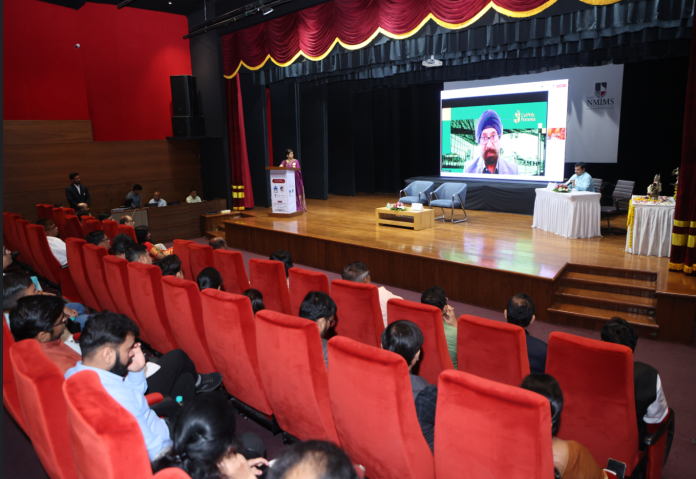Shirpur, March 29 – The second day of the International Conference on Next Generation Technologies for Sustainable Development (ICNGT-2025) began with a formal welcome by the organizing committee. The day’s proceedings commenced with the first session, delivered virtually by Dr. Harmit Singh, Chair of the Nutrition and Food Science Department at California State Polytechnic University, Pomona, USA. His talk, titled “The Future of Sustainable Agriculture in the US,” focused on critical challenges such as soil erosion, climate change, water conservation, and the economic dependence on agriculture. Dr. Singh also emphasized the importance of producing safe, nutritious food while ensuring economic sustainability for farmers. He addressed the impact of greenhouse gas emissions, CO₂ accumulation, and the urgent need to adopt renewable energy in agriculture. Highlighting the role of the food industry, he stressed the importance of eco-friendly packaging, recycling practices, and consumer responsibility in achieving sustainability. His session offered a comprehensive perspective on how science, policy, and consumer behavior must converge to build a resilient and sustainable agricultural future.
The second session featured an insightful presentation by Dr. Sudarshan Singh, Frontier Proactive Researcher at the Faculty of Pharmacy, Chiang Mai University, Thailand. He elaborated on the novel therapeutic potential of curcumin metabolites encapsulated in vesicle-based systems. His study, conducted for the first time, compared vesicle-entrapped TDMC and TBDMC formulations for their effectiveness in inhibiting LPS-induced nitric oxide (NO) production in macrophages and enhancing cell migration in HaCaT cells, with applications in on-site degradable dermal films for wound healing. Dr. Singh further shared diverse applications of biomaterials, including silk and nylon sutures, metallic nanoparticles development and antibacterial evaluation in preclinical studies, silver nanoparticle films, and AgNPs loaded on waste-paper as preservatives for household. His talk also highlighted innovations in food protection films for packing innovation, cosmetic applications using purple rice coats, and liposomes loaded with Rhodomyrtone for acne treatment. He showcased 3D-printed composite reinforcements, natural dye profiling, and emphasized the importance of drug delivery technologies, diagnostics, and biomaterials in advancing healthcare sustainability. His research reinforced the value of vesicle compatibility, entrapment efficiency, cell uptake, and the interdisciplinary nature of pharmaceutical innovation.
The third plenary session was delivered by Dr. Vandana Patravale, Professor of Pharmaceutics, Department of Pharmaceutical Sciences and Technology, Institute of Chemical Technology (ICT), Mumbai. Her session, titled “Non-Invasive Strategies for Peptide Delivery”, focused on cutting-edge approaches to improve peptide-based drug administration. Dr. Patravale highlighted that nearly 80% of newly approved drugs are biologics, with 197 peptide drugs currently on the market, most of which are administered via parenteral routes. She made a compelling case for non-invasive delivery systems, citing their advantages in patient compliance, cost-effectiveness, logistics, and accessibility. She presented work on microneedle formulations, including preformulation, in vivo, and pharmacokinetic studies. A key focus was the in-house synthesis of novel P-lipid, compared with marketed lipids, showing enhanced delivery efficiency. These P-lipids were further developed into lipid micelles and microneedle-based formulations. Using salmon calcitonin as a model peptide, she demonstrated its therapeutic potency and regulatory recognition. Additionally, she showcased lipid micelles coated on silica capsules for improved stability and bioavailability. Her lecture provided deep insights into the future of transdermal peptide delivery through innovative, non-invasive systems.
The fourth session featured an engaging virtual talk by Dr. Sudhamsh Reddy, AI/ML expert at Qlik and former Data Scientist at Philo, Cambridge, USA. His talk, “Autonomous AI Agents for Environmental Monitoring and Resource Optimization,” focused on leveraging AI to address global ecological challenges. Dr. Reddy explained the working of AI agents—autonomous systems driven by Large Language Models (LLMs) that act as the brain enabling perception, reasoning, and action. He discussed function calling, decision-making, chain-of-thought reasoning, and core traits like autonomy, reactivity, self-reflection, and learning capabilities. He further illustrated applications of AI agents in air quality monitoring (with case studies), drought prediction, water resource optimization, and river basin management systems, particularly referencing ongoing implementations in Southeast Asia. The session highlighted how AI can optimize real-time responses to environmental changes. Dr. Reddy also compared popular AI agent frameworks such as LangGraph, CrewAI, and OpenAI, guiding the audience in selecting appropriate tools based on use-case needs. His presentation bridged the gap between AI innovation and ecological resilience, encouraging the adoption of autonomous AI for sustainable environmental management.
The all sessions offered a rich blend of interdisciplinary insights, ranging from sustainable agriculture and pharmaceutical innovation to AI-driven environmental solutions and non-invasive drug delivery. Each speaker brought forward cutting-edge research and real-world applications, reflecting the evolving role of science and technology in solving global challenges. The day underscored the importance of collaboration across disciplines to drive sustainable development and foster innovation for a healthier, more equitable future.
We are grateful to the Chairperson Dr. Sunita Patil, Convenor Dr. S.S. Pancholi, Coordinators, organizing committee, speakers, session chairs, volunteers and all the participants for the successful execution of the conference.


